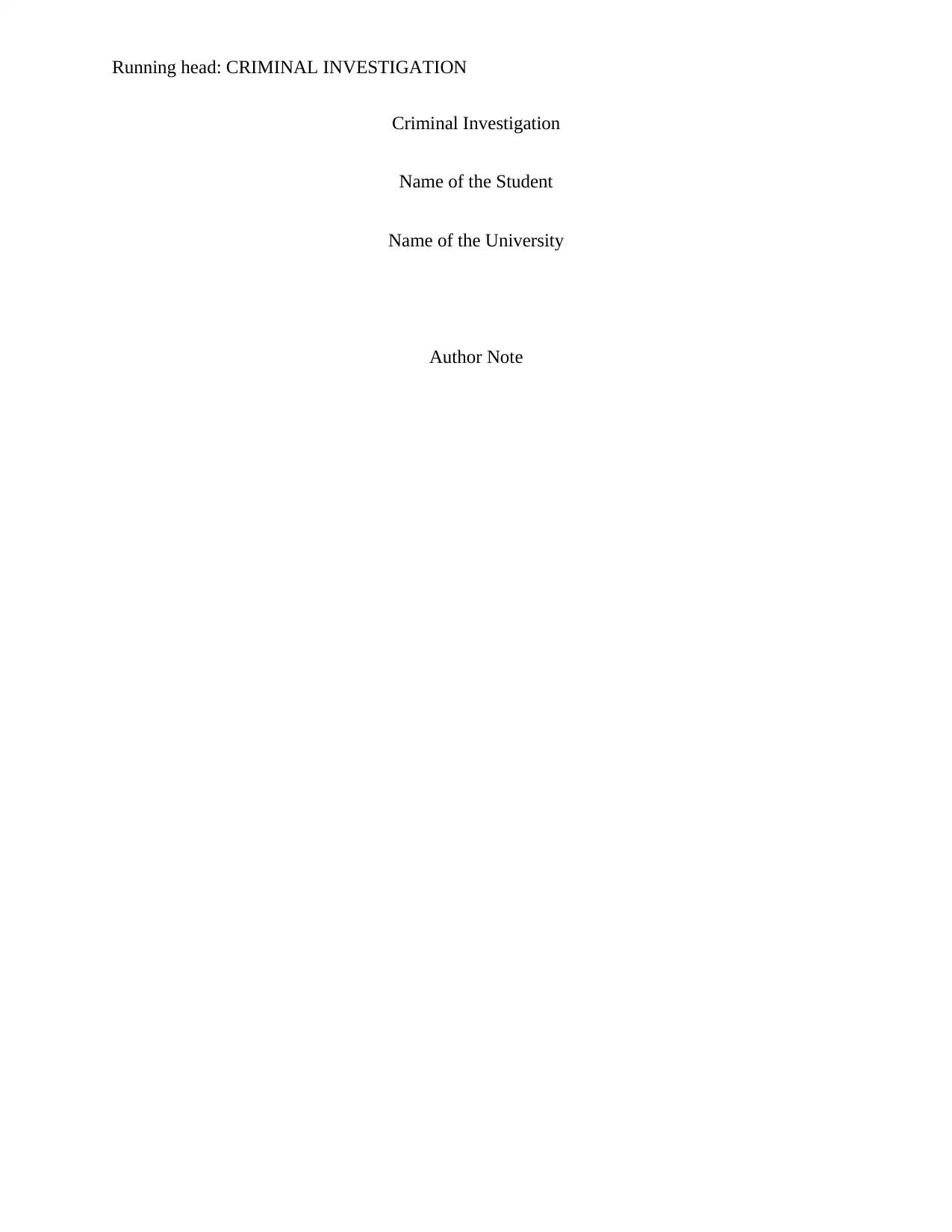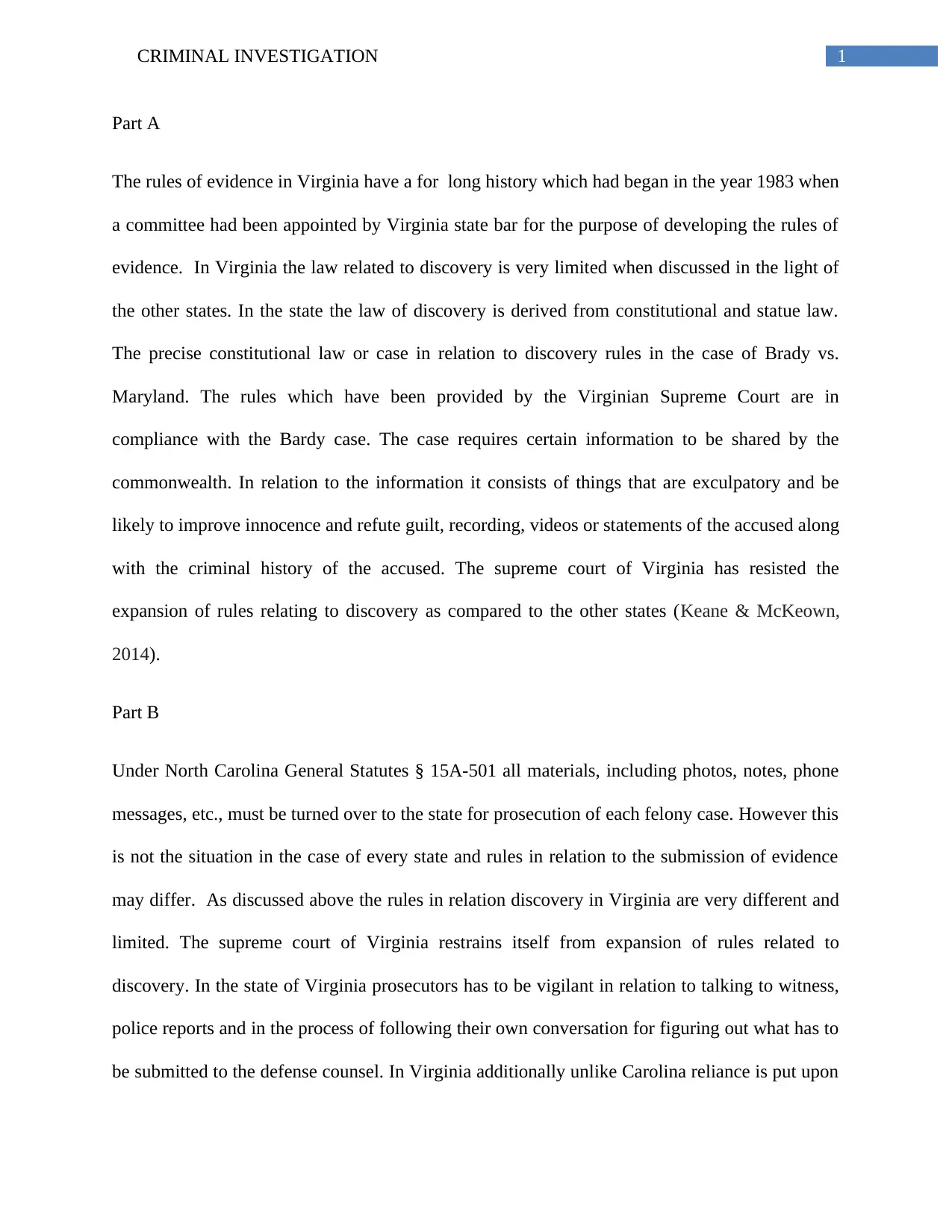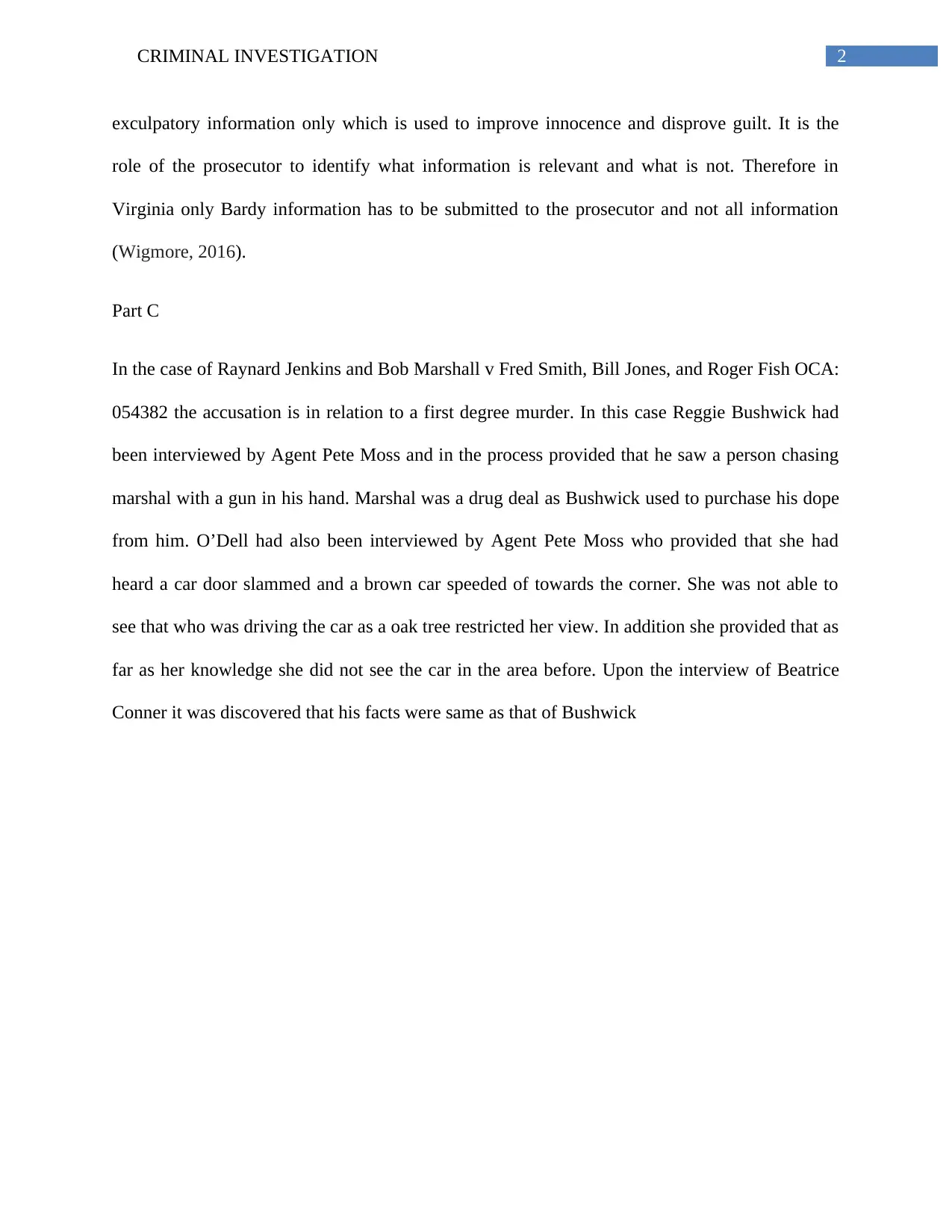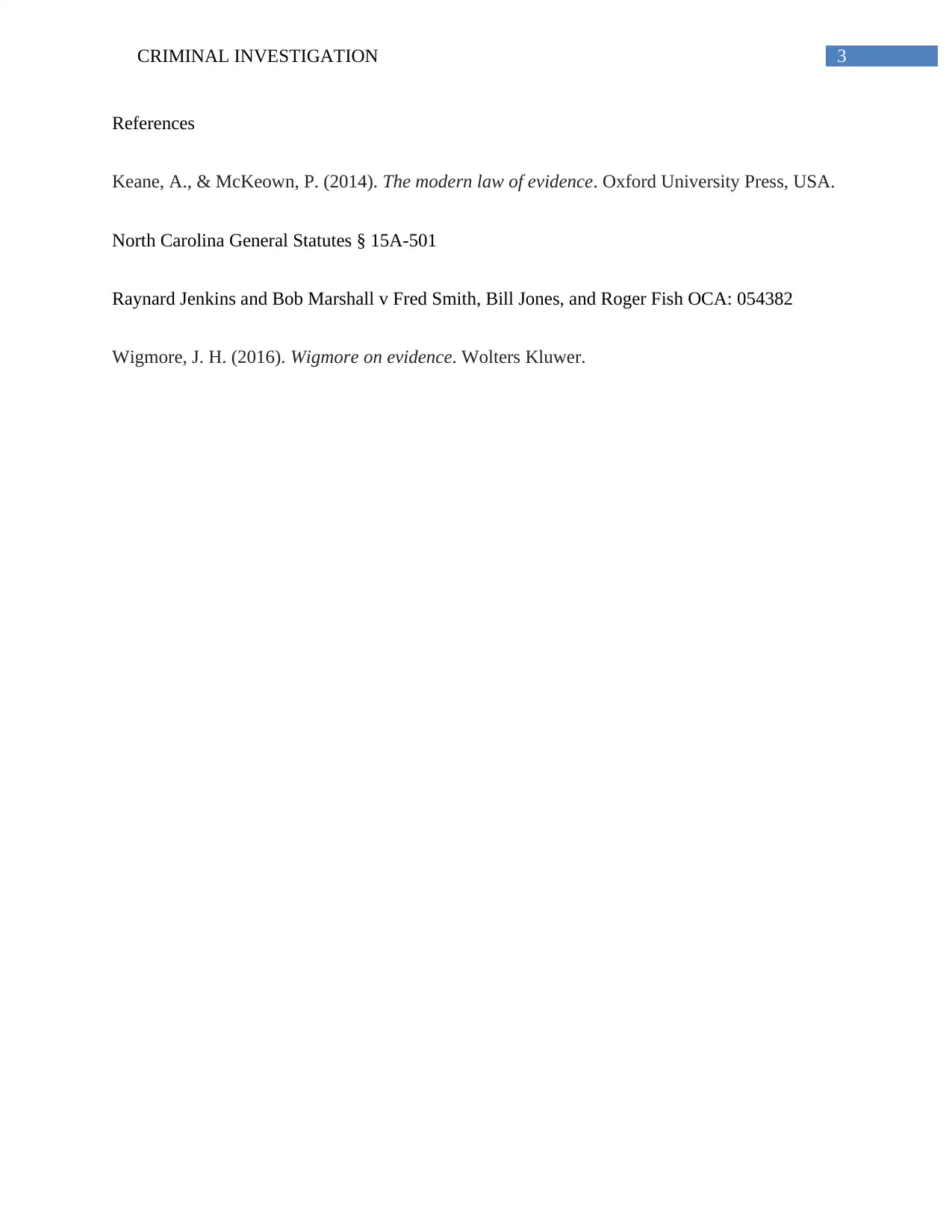Criminal Investigation: Evidence, Discovery, and Case Analysis Report
VerifiedAdded on 2020/04/21
|4
|642
|42
Report
AI Summary
This report delves into the realm of criminal investigation, particularly focusing on the rules of evidence and the process of discovery within the context of Virginia law. It begins by examining the historical development of evidence rules in Virginia, highlighting the role of the Virginia State Bar and the influence of the Brady v. Maryland case. The report emphasizes the limitations of discovery laws in Virginia compared to other states, and how the state adheres to the Brady rule, which mandates the sharing of exculpatory information. The report also compares Virginia's approach to North Carolina's, as it describes the different approaches to evidence submission and the role of prosecutors. Finally, the report analyzes a specific case, Raynard Jenkins and Bob Marshall v Fred Smith, Bill Jones, and Roger Fish, to illustrate how evidence and witness testimonies are evaluated in a criminal investigation. References to relevant legal and academic sources are also included.
1 out of 4











![[object Object]](/_next/static/media/star-bottom.7253800d.svg)